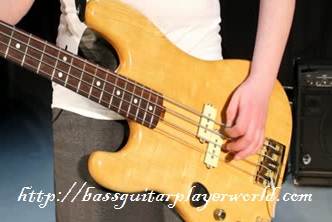Melodic Minor Scales – How to Play And Use Them
 There are many different kinds of scales used in modern music today. Each has its own purpose, and each has a unique sound that sets it apart (to the trained ear) from other scales.
There are many different kinds of scales used in modern music today. Each has its own purpose, and each has a unique sound that sets it apart (to the trained ear) from other scales.
The minor scale alone has three different variants that are commonly used; the natural minor, the harmonic minor, and the melodic minor.
The first is a scale in which all notes are played naturally. The second is a scale in which the seven note name is raised one half step. The third is a little bit different than both scales.
In this article, we will talk all about the melodic minor scale on bass guitar, including its uses, its characteristics, and why it is so different from the aforementioned scales.
Characteristics of the Melodic Minor Scale
Minor scales have a distinct sound that most listeners would describe as “sad.” This characteristic trait brings all three types of minor scales together. What sets them apart are their differences in construction.
For example, while the natural minor scale naturalizes all of the notes, and melodic minor does something quite different. In fact, the melodic minor scale has to different “faces”; its ascending face, and its descending face. In other terms, the melodic minor scale is different on the way up than it is on the way down.
On the way up, the melodic minor is simply a regular, average minor scale, with only two slight differences; a raised sixth (scale degree) note name, and a raised seventh (scale degree) note name. For instance, if we use the scale A minor, we know that there are no sharps or flats, or any accidental notes of any kind in the scale. A minor is a straight shoot from A to A, the notes within it being A, B, C, D, E, F, G, and back to the tonic, A.
Small Differences You Need to be Aware Of
 If we use this as a melodic minor scale, we must raise the sixth and seventh notes of the scale one half step. This means that, from the note F, we must move a half step up, bringing us to the note F#. Also, from the note G, we must move a half step up, bringing us to the note G#. This would give us, on the ascending side, the notes A, B, C, D, E, F#, G#, and A for our A melodic minor scale.
If we use this as a melodic minor scale, we must raise the sixth and seventh notes of the scale one half step. This means that, from the note F, we must move a half step up, bringing us to the note F#. Also, from the note G, we must move a half step up, bringing us to the note G#. This would give us, on the ascending side, the notes A, B, C, D, E, F#, G#, and A for our A melodic minor scale.
On the descending side of the scale, starting from that last A note, we naturalize both the sixth and seventh note names, which in this case brings us back to our original notes, F and G. This won’t always be the case, as the notes won’t always be non-accidentals.
Using both sides, we come up with an A melodic minor scale that looks like this:
A, B, C, D, E, F#, G#, A, G♮, F♮, E, D, C, B, A
The best way to familiarize yourself with the melodic minor scale is through practice and patience in learning how to play bass. Try taking some minor scales that you know, and follow the steps above to make them melodic minor scales. Have fun, and good luck!
You Need To Check This Out
If you want to a shortcut to bass playing success, Teach Me Bass Guitar is everything you will ever need. It is the ultimate DVD program that takes you step by step from a beginner to becoming an advanced player. For a limited time, get a WHOPPING 25% off the massive course…







One Comment
This was very helpful. I have always know the standard minor scales and found them difficult to use so I had never dove further to the melodic minors. I can use these melodics with out putting much thought into it. Thanks.